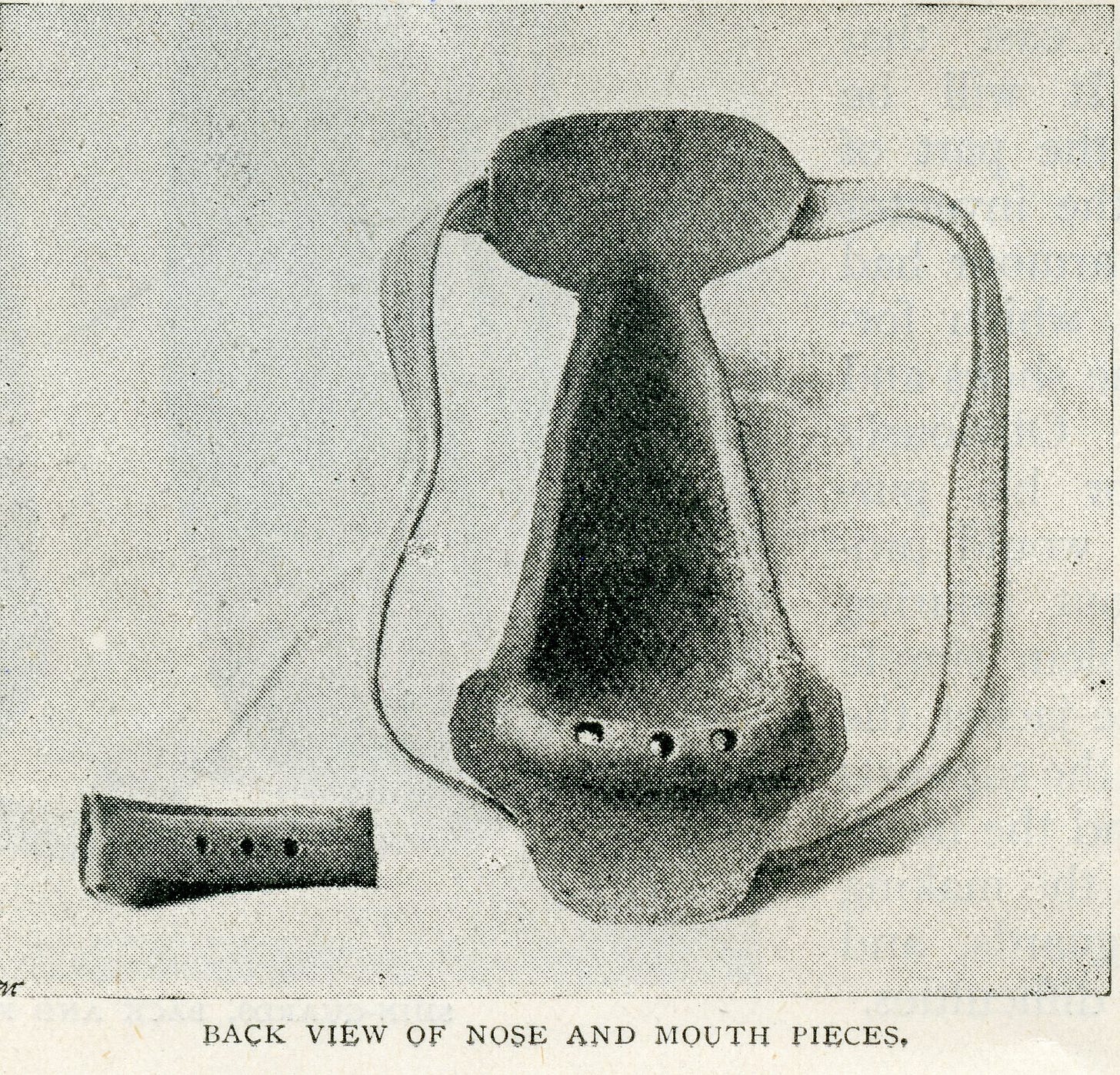A History of the Mouth Guard and Other Sound Bites
The story is being sent early today so you can read it without being interrupted during tonight’s Grey Cup. (6:00 ET on CBS Sports Network)
Football players may not have worn mouth guards since the game began, but they nearly did so. In fact, mouth guards were likely the first protective equipment football players wore, along with shin protectors. Shoulder pads arrived in 1895, head harnesses were on the scene by 1894, and Wright & Ditson marketed rubber mouth guards for football players by 1883, over a decade earlier.
The subsequent development in football dental appliances came in 1890 when Harvard captain Arthur Cumnock invented the nose guard. Sold to and marketed by Morrill, the Morrill Nose Guard, and its copiers dominated football facial protection for the next 30 years. As seen in the catalog image, they secured the mask to the face with a strap encircling the head, while the bottom of the mask stayed in place due to the wearer biting on the ridge at the back bottom of the mask. The mask covered and protected the front teeth, while the shelf separated the upper and lower teeth to help prevent tooth loss from blows delivered to the jaw.
The image below shows another view of the shelf on the backside of the Morrill Nose Guard.
Oral protection took a big step in 1947 when Rodney O. Lilyquist, a Los Angeles dentist, created the molded mouth guard.
She got to see AOC question Kennedy quite good there was a another senator who is a pediatrician who went after him yesterday sheHe published his work in the Journal of the American Dental Association in 1948, the same year the ADA began sponsoring research on mouth guards. At the time, half of high school football injuries involved the lips and teeth, and missing teeth were common, so improved mouth guards were quite welcome.
The improved mouth guard was great, but they failed to solve the challenge of keeping track of the darn things, and misplaced mouth guards served little purpose. Nose masks had a top strap, so players let the units hang around their necks when not in use.
Standalone mouth guards lacked a strap until the patented Mill-Mont mouth guard arrived in the early 1950s. Jointly developed by a former player for the USS Maryland (Miller) and a high school football coach (Montgomery), the Mill-Mont design was a pacifier-style mouth guard that covered players' lips and included a strap connecting it to the chin strap.
Of course, mouth guards were attached to face masks as the latter became increasingly popular.
The ADA recommended mouth guards for all contact sports in 1960. High school players nationwide were required to wear mouth guards starting in 1962, the same year the NCAA recommended them. The NCAA made them mandatory in 1973.
Ongoing efforts continue advancing mouth guard technologies to prevent dental injuries and potentially limit concussions. Though mouth guards have not yet been shown to help in that regard, some now include sensors to measure head impacts.
Football Archaeology is a reader-supported site. Click here for options on how to support this site beyond a free subscription.







